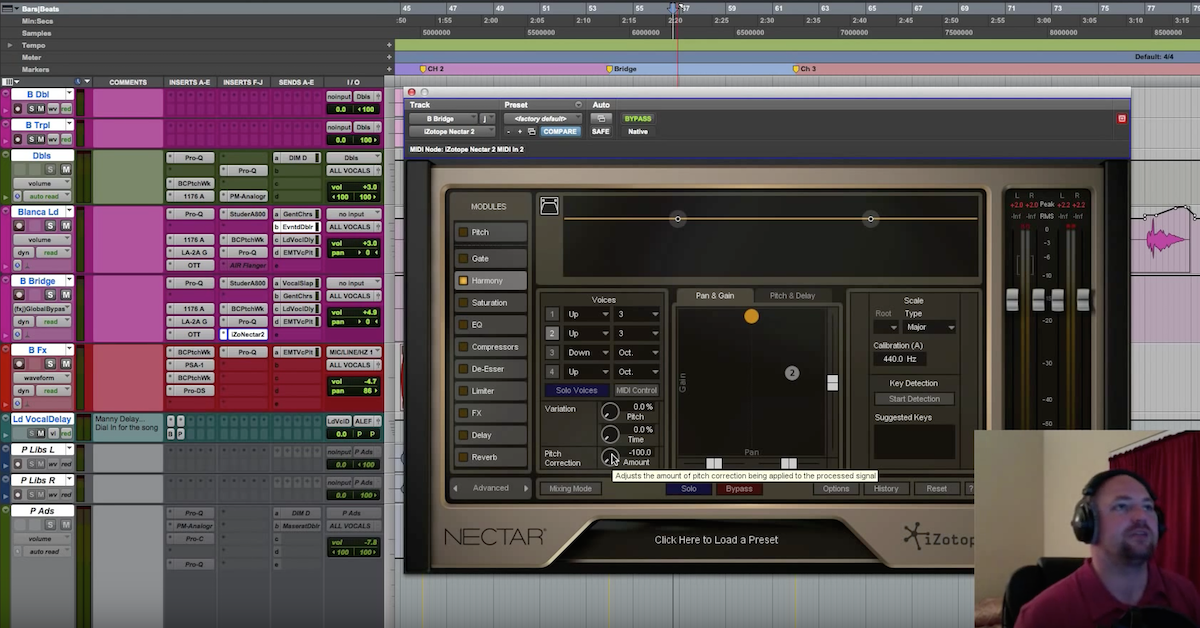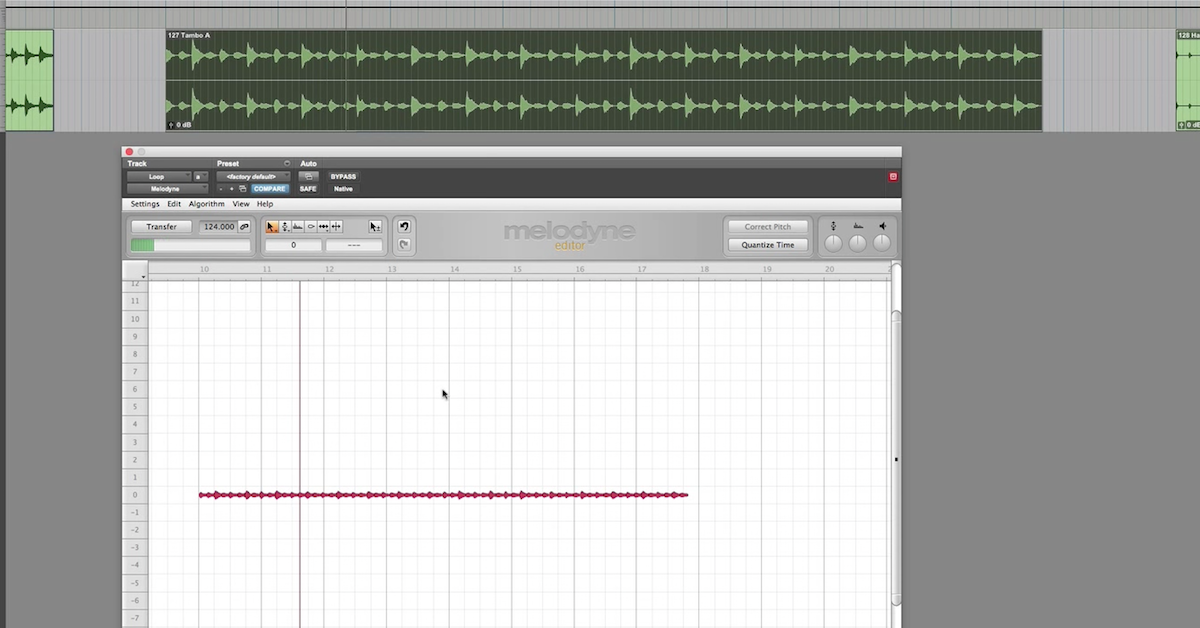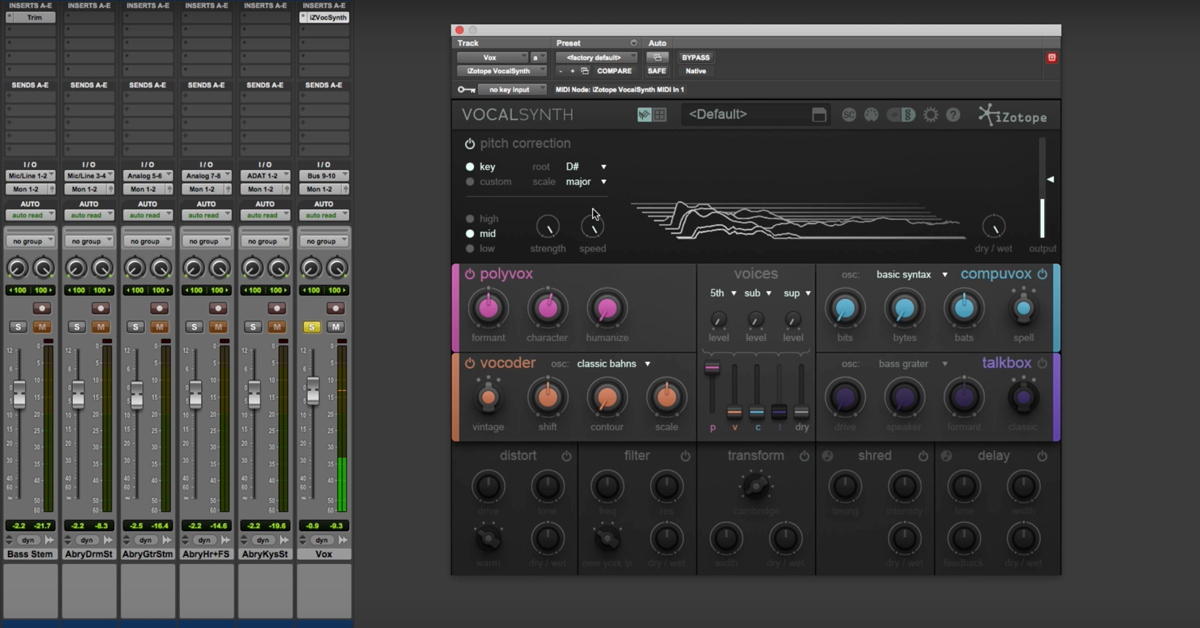How to use Flex Pitch as Your Creative Assistant
Article Content
I got together this week with a wonderful producer and friend Nathan Rosenberg from the Doghouse NYC. I just upgraded to Logic X and he was guiding me through the new features. During this time, he demonstrated the new Flex Pitch feature.
Normally, I don’t gravitate towards these types of things because I rarely work with a singer that needs pitch correction. I prefer to have the artist sing the line again rather than use Autotune or anything similar.
My first reaction was, “I don’t need that.” However, Nathan pointed out a very interesting use for this new feature. He explained to me how he uses Flex Pitch when creating harmonies. It acts as an aid to creativity, preserving the singer’s voice. Say what?!!
Harmonies in Disarray
Tracking harmonies is a hard task. It can be one of the most challenging things about production. Not only is it difficult to get the timing and intonation dead on, it’s hard to decide on the actual harmony.
This process can wear a singer out, causing them to strain their voice. By the time you’ve locked in the part you like, the singer has lost enthusiasm.
Burn out!! It happens often during vocal sessions. There is nothing that shows more clearly the state of your confidence level than your voice. The moment a singer becomes too self-aware about not hitting the right notes or not getting it right, the performance drops.
Change Da Game
Nathan was describing a scenario in a session where you may have part of the melody, but somewhere at the end of the line, it’s just not together. He simply opened Flex Pitch and moved the notes around to test options. Does a major 3rd work? No. What about a 4th?
No need to continually repeat a trial performance. Just use the basic performance and tweak. We all know that when trying different parts it’s not as easy as just singing different options. The singer may make mistakes, as the parts are new. Trying one idea may result in 3 tries. And that’s just to see f the part works. That number gets multiplied immensely when you have multi-part harmonies.
Starman
Now we have the capabilities to spare the performer of this torture. If you want to play with different rhythms, you can even use Flex Pitch to adjust the timing.
When you nailed down what parts you want, simply send the vocalist back into the booth and let them track it for real. You see the idea is not using Flex Pitch to fix a performance, rather to help you compose a part.
Fresh Tendrils
There are only so many takes that an artist can stay fresh on. Eventually, your mind starts to wander. You begin to think about your appointments or lunch. This is really why people comment that the first couple of takes are always their favorite. Even though they may not be super familiar with the song, they are hyper-aware and very focused. As focus fades, so does the performance.
Old Days Architecture
In the old days, you would usually sit around a piano like Brian Wilson and compose harmonies. In today’s world, not every producer is a musician or pianist (because of the layout, the piano is the best instrument to work out harmonies on).
You may not know a lot of music theory which enables one to express what they’re hearing. There is no reason to feel left behind. The most important thing is that you hear in your head what it should sound like. Whether it’s by sitting at the piano, writing on staff paper or using Flex Pitch in Logic to work out your ideas, it’s all a vessel to the island of composition.
Tweaking
Making adjustments to pitch is really easy too. You won’t need to spend hours reading the manual or searching user groups. Within seconds, you can be looking at audio on a piano roll editor. Just drag the pitches up or down on the grid. For the sake of a demo, you don’t have to get fancy with all the other adjustments. We’re simply looking to audition pitches.
This technology is not new. Melodyne has been around for years now. But, it’s never been as easy as in Logic Pro X. You don’t have to load a plugin, you just turn it on for the track. It can also be set to a key command. It took me longer to write about the process than to enable a track for Flex Pitch.
Love In The Future
So often, there seems to be a lot of talk about the negative sides of technology. Some say it enables people without talent. Although it may be an accomplice in some situations, it cannot completely save someone with absolutely no musical ability.
Let’s focus on of all the wonderful things we have access to that the previous generation would have drooled at. Sometimes there is a beauty in limitations. There are many of us that long for the days of tape and quick permeant decisions. That rarely seems to hurt music.
However, I don’t think anyone is fantasizing about strained vocal sessions of days gone by. Somewhere between the balance of tributes to a bygone era and the persistence to forge the modern age is a utopia for art.





